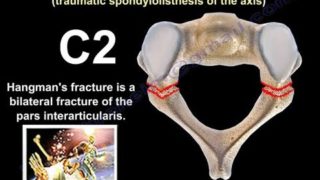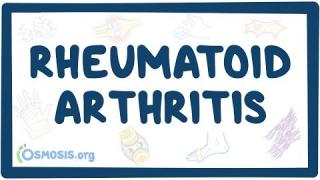Fractures Of The Calcaneus – Everything You Need To Know – Dr. Nabil Ebraheim
Dr. Ebraheim’s educational animated video describes fracture of the calcaneus - heel bone.
Fractures of the calcaneus could be open or closed. Open fractures can be a big problem.
The primary fracture line is caused by an axial load injury. The primary fracture line goes from anterolateral to posteromedial. The primary fracture line divides the calcaneus into two main fragments.
Superomedial fragment:
•Constant fragment.
•Also called sustentacular fragment
Superolateral fragment
•Tuberosity fragment
Superomedial fragment includes the sustentaculum tali and it is stabilized to the talus by ligaments. Talus is attached to constant fragment.
The flexor hallucis longus tendon lies underneath the sustentaculum and if screw placement to the sustentacular fragment is too long, this could affect the flexor hallucis longus tendon, causing fixed flexion of the big toe.
Type I-- Nondisplaced/Non-operative treatment
Type II--Two-part fracture of the posterior facet.
Type III--Three-part fracture of the posterior facet.
Sander’s type II & type III calcaneal fractures will benefit from surgery of reduction and fixation. Type III usually gets more arthritis because it has more fracture fragments and may end by fusion.
Type VI
•Highly comminuted •May require primary subtalar arthrodesis.
Calcaneal avulsion fracture is an important topic. Calcaneal avulsion fractures need urgent reduction and internal fixation to prevent skin complications. Avulsion fracture of the calcaneus is an emergency. Do not wait, do emergency surgery.
For joint depression fracture, wait for swelling to go down before surgery.
Open reduction and internal fixation of the calcaneus is generally delayed for 1-2 weeks to allow for improvement of the soft tissue swelling, except with fractures of the posterior tuberosity (avulsion fracture) which can cause skin tenting and urgent reduction is recommended.
Associated conditions
•Spine fractures-10% •Compartment syndrome of the foot -10% : if neglected will lead to claw toe due to contracture of the intrinsic flexor muscles. •Calcaneocuboid joint fractures-60% •Bilateral fractures of calcaneus -10% •Peroneal tendon subluxation: may be detected on axial CT scan. May be seen as an avulsion fracture of the fibula on x-rays.
Complication rate is high. Factors associated with poor outcome are:
•Age (older than 50 years) •Smoking •Early surgery •History of a fall
•Heavy manual labor •Obesity •Males •Bilateral injury •Workman’s compensation •Peripheral vascular disease.
Men do worse with calcaneal fractures than women. Calcaneal fractures are better if the patient is a female.
•Young females less than 40 years of age. •Patient has a simple fracture pattern.
Man with calcaneal fracture:
•Workman’s compensation •Heavy labor •0-degree Bohler angle: measured on lateral x-ray (Harris view and axial view)
•Probably will need subtalar fusion.
Bohler angle is formed by a line drawn from the highest point of the anterior process of the calcaneus to the highest point of the posterior facet and a line drawn tangential to the superior edge of the tuberosity. A decrease in this angle indicates the collapse of the posterior facet.
Stress fracture of the calcaneus may be misdiagnosed as plantar fasciitis.
•Occurs in female runners.
•Swelling
•Tenderness with medial and lateral compression of the hindfoot.
•A compression test or squeeze test. Positive squeeze test could mean there is a stress fracture of the calcaneus.
•Get an MRI if x-ray is negative
•Will see a fracture in T1 as a linear streak or a band of low signal intensity in the posterior calcaneal tuberosity.
•T2 will find an increased signal.
Complications
1-Wound-related complications are the most common complications (20%). Occurs more in smokers, diabetics and in patients with open fractures.
2-Open fractures of the calcaneus--May lead to amputation & there is a high risk of infection.
3-Malunion of the calcaneus
4-Peroneal tendon irritation and impingement from the lateral wall.
Surgery decreases the risk of post-traumatic arthritis.
Tongue-type fracture may benefit from closed reduction and percutaneous fixation or open reduction and internal fixation.
Joint depression type usually needs open reduction.
Some surgeons advocate conservative treatment of the calcaneus.
Subtalar distraction arthrodesis plus insertion of a bony block and rigid internal fixation
The lateral calcaneal artery provides blood supply to the lateral flap associated with the calcaneal extensile approach. Be aware that the sural nerve is in the vicinity of the surgical area. The extensile approach has delayed wound healing in about 20% of cases.
Become a friend on facebook:
http://www.facebook.com/drebraheim
Follow me on twitter:
https://twitter.com/#!/DrEbraheim_UTMC
Fractures Of The Calcaneus – Everything You Need To Know – Dr. Nabil Ebraheim
Other Videos You Might Like:
Subscribe
Login
53 Comments
Newest




